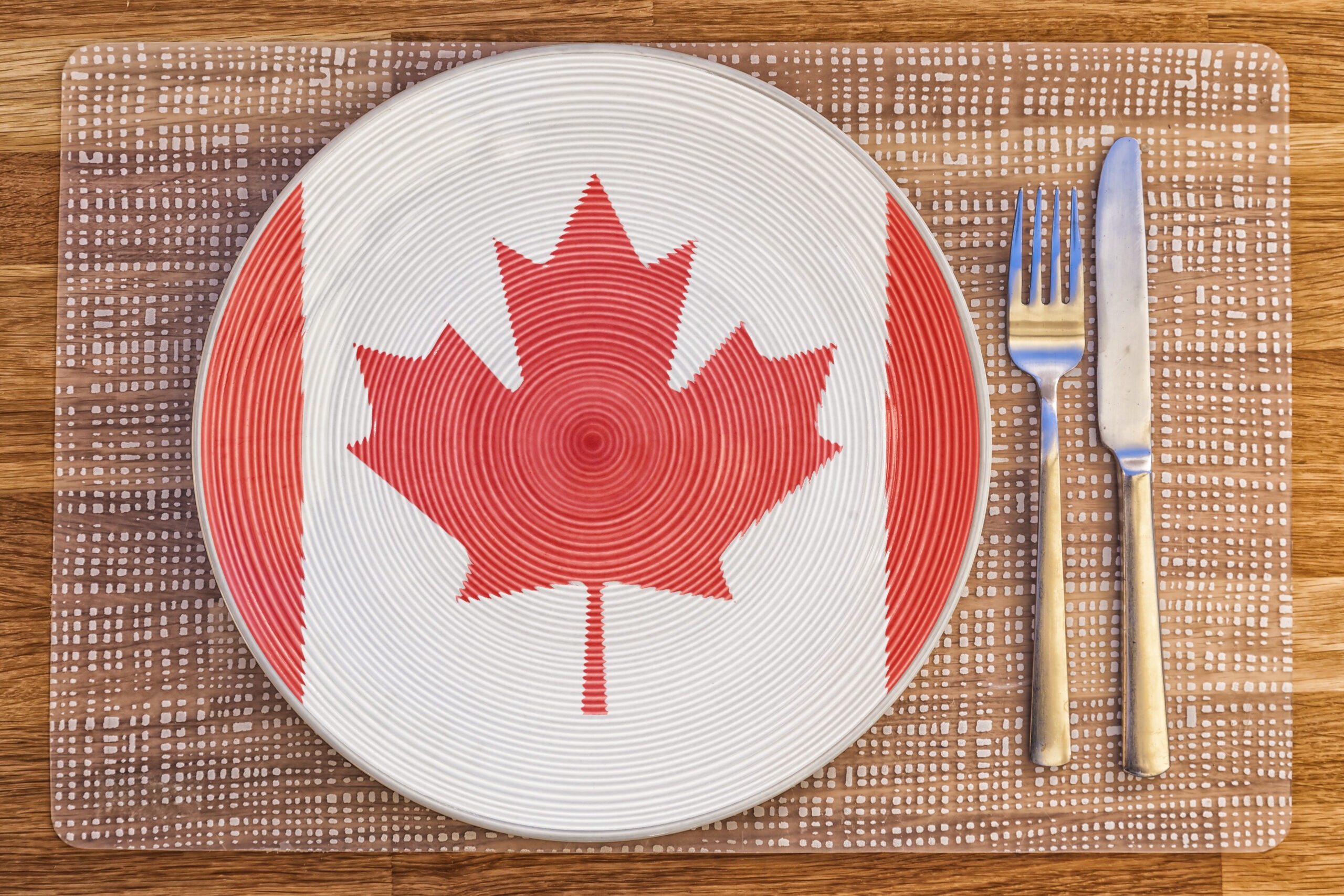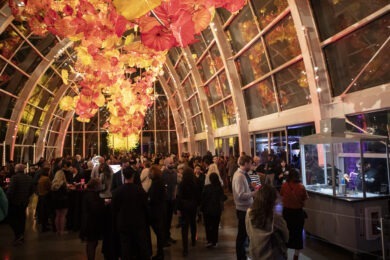How America’s northern neighbor is setting a new standard
With its beautiful scenery and rich history, Canada has always had much to offer meeting profs. Many Canadian vendors have focused on elevated food and beverage options to stand out in an increasingly competitive global market for meetings and events. Smart Meetings spoke with representatives of Canada’s top vendors about the positive evolution of F&B.
Brunch: Offer a Favorite Sunday Pastime to Your Attendees
Let’s begin with how to start the day. The old model of an early-riser breakfast followed by an early afternoon lunch has become somewhat tired now that schedules during meetings can vary widely. From a financial perspective, serving two meals instead of one is always going to be more expensive. Canada’s solution? Brunch is king. A late-morning meal that includes both sweet and savory options is perfect to suit a wide variety of preferences.
There are many professionals who either skip breakfast entirely or prefer a small bite alongside a cup of coffee. Also, an early morning breakfast is not always a great time to gather the team for a social activity; people are starting their days, checking their emails and preparing their schedules, and many prefer to eat on their own while they do so. The St. Regis Toronto, for example, offers groups of 25 or more an option for a two-course brunch including starters and entrees.
In general, the brunch trend has exploded and become a staple Sunday routine for Americans (though many other countries, such as France, regard a late morning breakfast enjoyed at leisure as standard protocol). For Americans, a business brunch is an opportunity to enjoy a meal that is more often eaten before rushing out the door or wolfed down while sitting in traffic (or the infamously American habit of eating at our desks). Incorporating brunch into professional meetings will both inherently elevate the experience for Americans and be appealing to non-Americans who are more acclimatized to eating this way.
Step It Up: How Canadian Vendors Are Elevating Their F&B Options
In addition to offering a more relaxed first-meal option, Canadian vendors are also passionately committed to an elevated dining experience all-around. Meeting profs are focused more and more on the dining experience of attendees as a response to a rapidly growing demand. The culinary atmosphere is a crucial element of what many refer to as a “sense of place” at a meeting.
Read More: Travel and Tourism Trends in U.S. and Canada
Efforts such as locally sourced food, seasonal ingredients, and a connection to a larger theme such as the surrounding area’s history (such as is done by Sheraton Centre Toronto) are several examples. The Westin Bayshore, Vancouver hosts a hydroponic garden with fresh herbs and greens, as well as an on-site apiary.
In Their Own Words:
Smart Meeting: In what ways do Canadian Marriott vendors consider both local and international attendees when planning their F&B offerings?
John Hart, Senior Director, Global, US and Canada Meetings + Events, Marriott International: During a group planning and discovery stage, we take time to understand attendee demographics, preference and past events so we can design menus and experiences based on that information. We also seek to offer menus that represent local cuisine and culture to create a sense of place for our guests, allowing guests to walk away with an experience, as well as stories unique to the destination.
Stacey Rodrigues, Hotel Manager, The Westin Harbour Castle, Toronto: At The Westin Harbour Castle, Toronto we offer customizable menus, with the flexibility of adding a variety of items that align with the tastes and preferences of those specific attendees (local or internationally focused, or a mix). For example, our teams work closely with meeting planners to understand the cultural needs of our guests and offer local cultural cuisine items as part of the overall food and beverage experience.
Tim Reardon, General Manager, Sheraton Centre Toronto Hotel: As the largest Marriott-managed hotel in Canada, our kitchen is enriched by a culturally diverse team, enabling us to offer a wide array of culinary delights, while creating memorable experiences for our guests.
For example, during the recent Song and Dance Festival, we crafted traditional bacon buns and sourced authentic Latvian beer, delighting our Latvian guests. Our mission is to balance comfort food with the unique local flavors of Toronto, providing guests with a taste of the city’s culinary heritage.
SM: What are some innovative approaches to considerations such as sustainability, diet preferences, and local history?
JH: Sustainability continues to be a top priority for Marriott and one that holds significant importance to our customers. From local, responsibly sourced food to food waste reduction initiatives and limiting use of single-use plastics, our hotels activate numerous efforts that help customers reach their sustainability goals.
Read More: Sustainability Tools for Easier Green Planning
By actively utilizing local vendors, we support communities, offer the best products available, and support sustainability by reducing shipping and storage costs. We strive to design menus with inclusivity in mind by incorporating often requested dietary needs and preferences, including vegan and gluten free.
SR: Some of our sustainability efforts include using edible packaging or vessels for things like small bites or canapes which are easier on the environment to produce and contribute to lower food waste. This also allows us to lean into seasonal menus, and locally produced ingredients while helping guests understand the environmental impact of our food choices.
In terms of dietary preferences, we add in a number of “functional foods” with labelled ingredients highlighting nutritional impacts and benefits to align with guest preferences, and we often create separate food stations for guests with specific dietary needs to ensure they don’t consume certain foods in error (especially in the case of allergies).
TR: Sustainability is especially important to us, so we have created food surplus management protocols to help us manage food waste. This includes partnering with a local organization to freeze and donate all untouched excess food. In May and June 2024 alone, we donated 97.5 kg of food, which is equivalent to 325 meals. We have also developed fully vegan menus and utilize water coolers in our meeting areas to reduce water waste.
SM: Please share details on one example of top-tier F&B offerings at a Canadian Marriott vendor for large-scale meetings.
JH: The Ritz-Carlton, Toronto recently curated an event inspired by Taste of Toronto. This reception-style event fully transformed the hotel space by creating neighborhoods with unique culinary experiences from that area. Like the actual Taste of Toronto event, the hotel activated areas representing Little Italy, Little Portugal, China Town, St. Lawrence Market, Danforth, and Queen Street.
The hotel partnered with a local décor company to produce street signs, road markings on the floor, and streetlamps and further enhanced the event with a local Toronto musical entertainment. The event touched upon all the senses, creating a truly memorable experience for guests.
SM: What are some key considerations for meeting profs when planning F&B, whether that be buffets, plated meals, or something else?
JH: It is important to create a strong partnership with your hotel team by sharing information about your group history, budget, and event goals. This information enables hotels to highlight menus and event concepts that are focused on your needs and highlight the best of the hotel and local area. Our property culinary and event teams are excited to engage with our meeting planners to curate creative food and beverage experiences.
SR: First, planners should consider the overall attendee goal. After the pandemic, the desire to connect and network is stronger than ever, which works well for reception style, mixed seating events rather than plated meals with assigned seating. Be sure to look at the overall attendee profile when selecting food and beverage offerings, with a lens on current global trends.
Read More: Making a Tasteful Impression Through a Food and Beverage Program That’s a Cut Above
Healthy, clean eating is becoming increasingly popular, so ensure that plant-based options are available along with healthier alternatives to traditional items such as muffins (e.g. homemade granola). There is also less of a focus and desire for alcoholic beverages but still a craving for original, tasty and well-presented beverages, so we suggest offering a good variety of mocktails that offer the same fun, event-like experience for attendees without the alcohol.
TR: Consider the event type. Meal services should be tailored according to event formality. Buffets are preferred for casual gatherings, providing guests with flexibility in their choices. Plated meals are often the best choice for formal events as they ensure consistent quality and portion control, while maintaining an elegant presentation. Boxed meals are offered for efficient service during tightly scheduled events or when attendees have limited time between sessions.
Considerations should also be made for budget constraints and dietary restrictions to accommodate all guests and enhance their dining experience. In terms of beverages, planners should ensure that beverage offerings respect cultural and religious backgrounds, and alcohol service complies with a client’s consumption policy.




